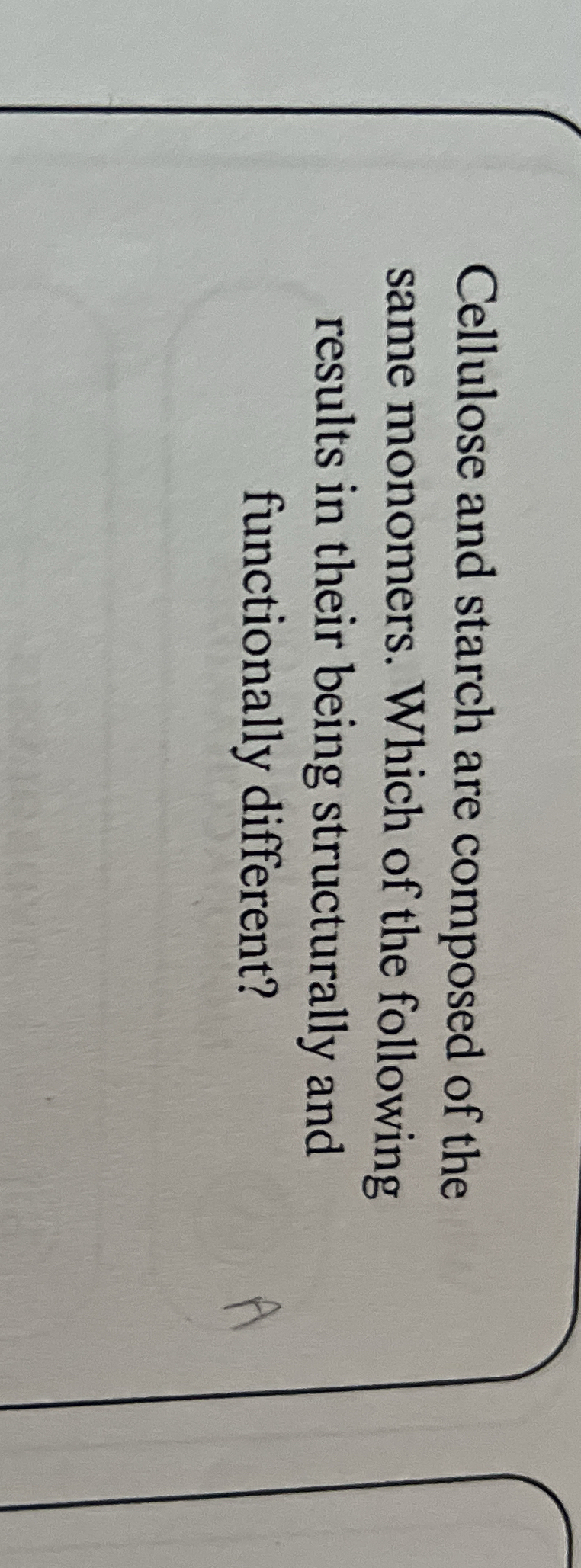Cellulose and starch are composed of the same monomers. Which of the following results in their being structurally and functionally different?

Understand the Problem
The question is asking about the structural differences between cellulose and starch despite them being composed of the same monomers. It requires knowledge of carbohydrate chemistry.
Answer
Starch has alpha glucose; cellulose has beta glucose.
Cellulose and starch are composed of the same glucose monomers, but the structural and functional difference lies in the type of glucose and their linkages. Starch is formed from alpha glucose, whereas cellulose is made of beta glucose. This difference in linkages results in distinct 3-D structures.
Answer for screen readers
Cellulose and starch are composed of the same glucose monomers, but the structural and functional difference lies in the type of glucose and their linkages. Starch is formed from alpha glucose, whereas cellulose is made of beta glucose. This difference in linkages results in distinct 3-D structures.
More Information
The alpha and beta glucose forms cause different bonding angles, leading to different 3-D structures, affecting their digestibility and function in organisms.
Tips
A common mistake is assuming both are usable for the same purposes. Cellulose is not digestible by humans due to its beta linkage.
Sources
- Starch vs Cellulose - Structure & Function - study.com
- Difference Between Starch and Cellulose - BYJU'S - byjus.com
AI-generated content may contain errors. Please verify critical information